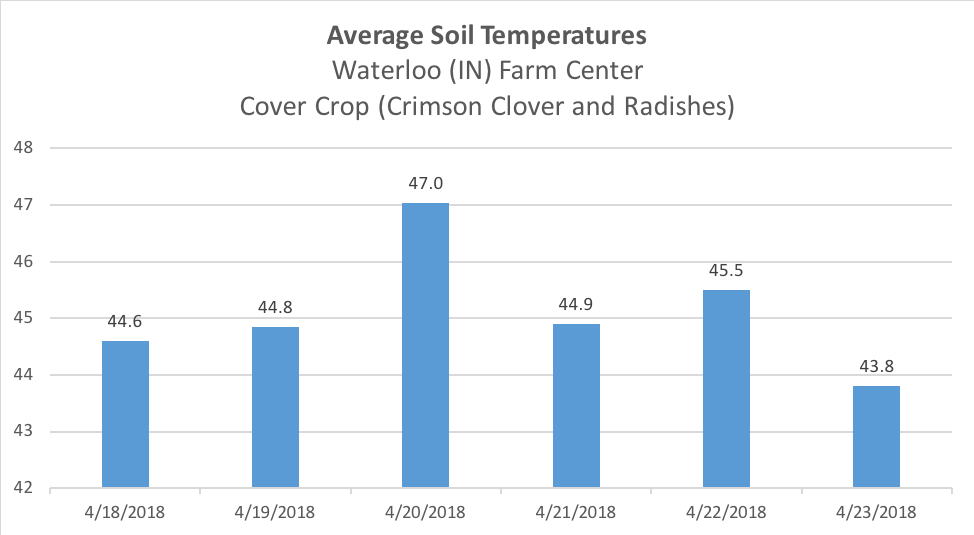Update from the Field: The Sun Will Come Out Tomorrow…
Posted by David Dyson, Agronomist on April 24, 2018
This post may reference products and/or services only available to our Retail Farm Center customers. For more information contact your Territory Manager at The Andersons.
As the title suggests, you can bet your bottom dollar that spring will eventually come out and play in the northern half of the country. While we wait, let us explore some ways to get the corn crop jump-started, especially with the colder- and wetter-than-normal conditions we’ll be planting into!
First, we need to look at seed vigor. All seed varieties are tested for cold germination. These ratings are published in their respected seed guides. To give a couple of examples, DuPont will rate their cold germination as “stress emergence” and Monsanto will rate their cold germination as “emergence”. There is no industry-wide standard of cold germination testing, so these ratings will all be compared relative to their own varieties. I would recommend growers start planting the varieties rated high on cold germination. This will decrease the chances of the cold soils hampering the germination process. If you have questions, a seed representative at one of The Andersons Retail Farm Centers would be happy to guide you in the right direction.
Second, seed treatments in these weather and soil conditions are worth their weight in gold. In cold and wet conditions, germination and tissue growth will be slow. When the kernel shoots out the mesocotyl and radicle roots (Figure 1) slowly, it is susceptible to damage from insects and fungal diseases. Seed treatments can provide protection for the seedling while it slowly grows out of the “danger zone.” Once emergence happens, the risks are reduced, but not completely gone. These seed treatments will last about a month after planting, giving the grower a cushion just in case slower growing conditions persist.

Figure 1: This picture from Purdue University shows the different parts of a seedling.
Finally, using a high quality, low-salt starter close to the seed will “pop” the seed out of the ground faster than any other input available to the grower. In cold soils, the plant will be slower in developing a root system to acquire sufficient nutrients. With not enough nutrients, the root system will be stunted. This problem will spiral out of control and lead to seedling death! Readily-available nutrients near young plants help ensure rapid early growth and the formation of large leaves, which are necessary for photosynthesis. Phosphorus is non-mobile in the soil, thus, undeveloped seedling roots have difficulty obtaining the necessary amounts for proper growth. Also, phosphorus promotes vigorous root growth.
In summary, rapid crop establishment is desirable since plant development and yield can be influenced during early growth stages. Also, fast-growing young plants are generally more resistant to insect and disease attacks and can compete with weeds more effectively. Growers should look to achieve three main objectives in applying a starter fertilizer:
-
Faster emergence
-
Quicker growth processes, which will lead to earlier pollination
-
Earlier crop maturity and dry down
Soil Temperature Update
Below are average soil temperatures from corn residue, bean stubble and cover crop (crimson clover and radishes) plots at our Waterloo, IN Farm Center over the past week.



FOR MORE INFORMATION:
Please complete the form, and we’ll get you in touch with your Territory Manager from The Andersons.

Dave Dyson is a regional agronomist for The Andersons’ Farm Centers which are located throughout Ohio, Michigan, and Indiana. He is an Indiana native and grew up on a dairy farm in Miami County. A graduate of Purdue University with a degree in Crop & Soil Science, Dave has a deep knowledge of various agronomic topics and is committed to helping growers improve their crops. If you have any questions, Dave can be reached at david_dyson@andersonsinc.com.


